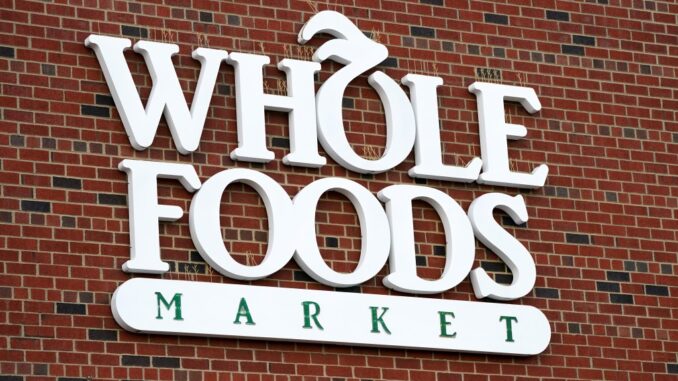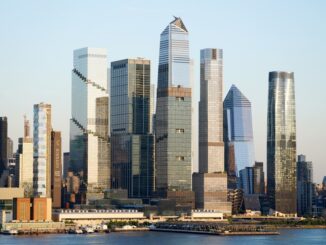
Whole Foods signed a lease for a new store in the East Village in a space that has been empty since before the pandemic, Realty Check has learned.
The Amazon-owned market will open at 409 E. 14th St., which went dark after an Associated supermarket closed in December 2019, as the company rolls out a line of smaller-format Whole Foods Market Daily Shops in the city.
The first of those is slated to open later this year at 1175 Third Ave. at East 69th Street.
However, it wasn’t known exactly what type the East 14th Street location will be. It has 10,000 square feet at street level and 10,000 more square feet in the basement.
The space is part of Blackstone-owned Stuyvesant Town.
Whole Foods currently has 17 stores in the city.
The 14th Street block has had problems with crime and vagrancy including a recent murder at the Avenue A corner. But a nearby Trader Joe’s has thrived despite the lawlessness.
Meanwhile, a new Trader Joe’s opened in the new Urban League Empowerment Center office building at 123 W. 125th St. last week, representing a 17,800-square-foot bet on the central Harlem’s rising fortunes. A new Target store with 44,000 square feet is coming there soon as well.
At the same time, an enormous,15,000-square-foot JPMorgan Chase branch at 1251 Sixth Ave. at West 49th Street is slated to close in September — leaving a void on the teeming boulevard where most employees have returned to their offices.
The circumstances reflect a Manhattan retail scene that continues to be in turbulent flux, struggling to get its juice back after the pandemic and — maybe more critically — the online shopping boom that cut into brick-and-mortar demand long before 2020.
In light of the damage from home shopping — and from acres of space dumped on the market by banks and the likes of Duane Reade, Walgreen’s, CVS and Rite Aid — it’s remarkable that storefronts are as occupied as they are.
Reliable retail statistics are notoriously harder to come by than for offices. An “availability” can mean a 600 square-foot vacancy or a 60,000 square-foot one. The most meaningful rents — those on the ground floor — are hard to pin down for multi-level space with “blended” rents.
New data from the Real Estate Board of New York and CBRE found cause for optimism, tempered by the fact that rents remain 20% to 30% below peak pre-2020 levels.
REBNY found strong but “uneven” demand in 16 prime Manhattan corridors, much of it driven by food-and-beverage and apparel sector users. Rents in 10 of them rose over the first half of 2023.
The report by REBNY director of market data and policy Keith DeCoster noted that certain streets and avenues are more fully leased than they look to passersby. Some locations look vacant due to delays in licensing and permitting, elevated buildout costs and restricted lending.
“Lengthy buildout times sometimes heighten the sense that streets are lined with vacancies,” REBNY said. Leased but empty-looking store fronts can take eight months to more than a year before tenants can open.
The report noted that a new Mermaid Inn coming to 336 Columbus Ave. “has been in the works for more than a year” but delayed by construction issues.
Among the major recent new leases, REBNY cited deals by luxury tenants on upper Madison, the Grand Central area and just about everywhere in Soho.
CBRE’s second-quarter data reflect similar mixed findings.
It said that leasing paradoxically slowed due to a shortage of prime inventory — the kinds of spaces most high-end and large retailers want. Overall, the number of direct-lease ground floor availabilities fell by 19% year over year, CBRE found.
Corridors with the most empty storefronts were Broadway below Chambers Street (22); 34th Street between Fifth and Seventh avenues (20); and Broadway from West 72nd to West 86th Street (16).
CBRE’s Matt Chmielicki commented, “Counting vacant storefronts isn’t the most scientific way to understand the market.” Like REBNY, he cited ever-longer times between a lease signing and an opening due to permit and construction issues.
“It can take forever,” Chmielicki said ruefully.
CBRE found that new-to-market retailers signed for 163,000 square feet in the second quarter, one-third of all leasing volume.
Notable among them was arts and crafts retailer Hobby Lobby, which took 70,000 square feet for its first Manhattan location at 270 Greenwich St., formerly home to Bed Bath and Beyond and Barnes & Noble.
Real Estate – Latest NYC, US & Celebrity News | New York Post



